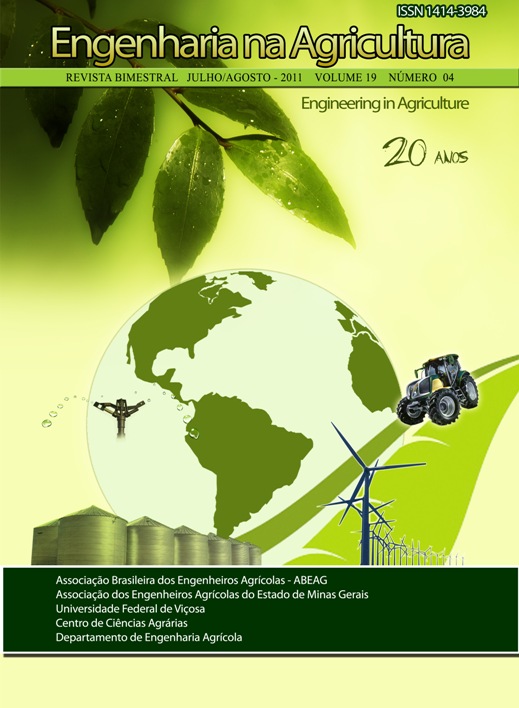DEVELOPMENT OF AN AUTOMATIC METEOROLOGICAL STATION FOR IRRIGATION MANAGEMENT
DOI:
https://doi.org/10.13083/reveng.v19i4.320Keywords:
estação meteorológica automática, irrigação, tecnologia nacionalAbstract
An automatic meteorological station with indigenous technology was developed for irrigation scheduling. The station is composed of five sensors, normally used to calculate hydric balance in which rainfall and ETo are two major computation parameters. The equipment has a display to visualize data of earlier days, memory to store one year data on hourly basis, data communication port to microcomputer via RS-232 protocol, computer software to collect and visualize data and a solar panel for battery charging. The sensor was calibrated according to the recommendation of WMO. The correlation indexes (r) was 1.000, 0.998, 0.999, 0.997 and 1.000, respectively for wind, rain, air humidity, solar radiation and temperature respectively. The equipment attained the objectives of energy self-sufficiency, data manipulation with or without a microcomputer, use simplicity, easy maintenance and high correlation of sensor’s response. It was concluded that the equipment satisfies the technical and operational requirements for use in agriculture. Being a prototype, it is not yet available for immediate substitution of the similar equipments on market, because it requires tests in the national and international accredited meteorology laboratories to certify its correct operation.Downloads
Downloads
Published
How to Cite
Issue
Section
License
Authors who publish with this journal agree to the following terms:
The author(s) authorize(s) the publication of the text in the journal;
The author(s) ensure(s) that the contribution is original and unpublished and that it is not in the process of evaluation by another journal;
The journal is not responsible for the views, ideas and concepts presented in articles, and these are the sole responsibility of the author(s);
The publishers reserve the right to make textual adjustments and adapt texts to meet with publication standards.
From submission, the author is fully conceding the paper's patrimonial rights to the publication, but retaining the owner of its moral rights (authorship and paper's identification) according to Creative Commons Attribution-Noncommercial.








 Licensed by
Licensed by 